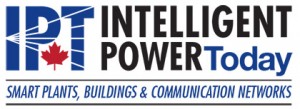Digitalization of Switchgear: Traditional to Smart Systems
The electrical power grid is undergoing a significant transformation towards digitalization. This trend extends to switchgear, a critical infrastructure component for isolating, controlling, and protecting electrical circuits. Traditional switchgear is evolving into "smart" systems, incorporating advanced digital technologies to enhance performance, efficiency, and reliability. This article explores the digitalization trend in switchgear, highlighting the benefits of integrating Internet of Things (IoT) technologies, real-time monitoring, and automated control functionalities.
The Evolution to Smart Switchgear
The journey from traditional to smart switchgear represents a leap in technological advancement, reflecting broader trends in the energy sector towards digitalization and intelligent automation.
Traditional vs. Smart Switchgear
Traditional switchgear has been mechanical in nature, requiring manual monitoring and operation. In contrast, smart switchgear incorporates digital technology, enabling enhanced functionality and performance through automation and real-time data analytics.
Integration of IoT Technologies
IoT integration is a hallmark of smart switchgear, allowing components to communicate and interact with each other and with central management systems. This connectivity provides a wealth of data that can be used to optimize performance and predict maintenance needs.
Benefits of Smart Switchgear
The transition to smart switchgear systems brings numerous benefits, significantly impacting the efficiency and reliability of power distribution networks.
Enhanced Monitoring and Control
Smart switchgear offers comprehensive monitoring capabilities, providing detailed insights into system performance and status. Real-time data acquisition enables more accurate and timely decision-making, improving operational efficiency.
Predictive Maintenance
With the ability to monitor equipment condition continuously, smart switchgear supports predictive maintenance strategies. This approach prevents failures before they occur, reducing downtime and extending equipment lifespan.
Improved System Reliability
Automated control and advanced diagnostics in smart switchgear enhance system reliability. Automated fault detection and isolation minimize the impact of outages, ensuring a stable and reliable power supply.
Challenges in Implementing Smart Switchgear
While the shift to smart switchgear offers clear advantages, it also presents challenges that must be carefully managed.
Technological Complexity
The complexity of smart switchgear systems requires skilled personnel for operation and maintenance. Ensuring that staff are adequately trained and supported is essential for the successful implementation and operation of these advanced systems.
Cybersecurity Risks
The increased connectivity of smart switchgear raises cybersecurity concerns. Protecting these systems from cyber threats is paramount to maintaining grid integrity and reliability.
Investment and Cost Considerations
Upgrading to smart switchgear involves significant capital investment. The economic justification for such upgrades must consider the long-term benefits of improved efficiency, reduced maintenance costs, and enhanced reliability.
Future Trends in Switchgear Digitalization
The ongoing digitalization of switchgear is part of a larger trend towards more intelligent and automated power systems, with several key developments on the horizon.
Integration with Renewable Energy Sources
Smart switchgear is playing a crucial role in integrating renewable energy sources into the grid, managing the variability and distribution challenges associated with these sustainable power sources.
Adoption of Artificial Intelligence and Machine Learning
AI and machine learning technologies are increasingly being integrated into smart switchgear, enhancing predictive analytics and operational decision-making processes.
The digitalization of switchgear, transitioning from traditional to smart systems, represents a significant advancement in the electrical power industry. By integrating IoT, real-time monitoring, and automated control, smart switchgear is setting new standards for system efficiency and reliability. Despite the challenges associated with this transition, the benefits of smart switchgear in terms of enhanced operational capabilities and future readiness are undeniable, positioning it as a key component in the evolving landscape of power distribution and management.
